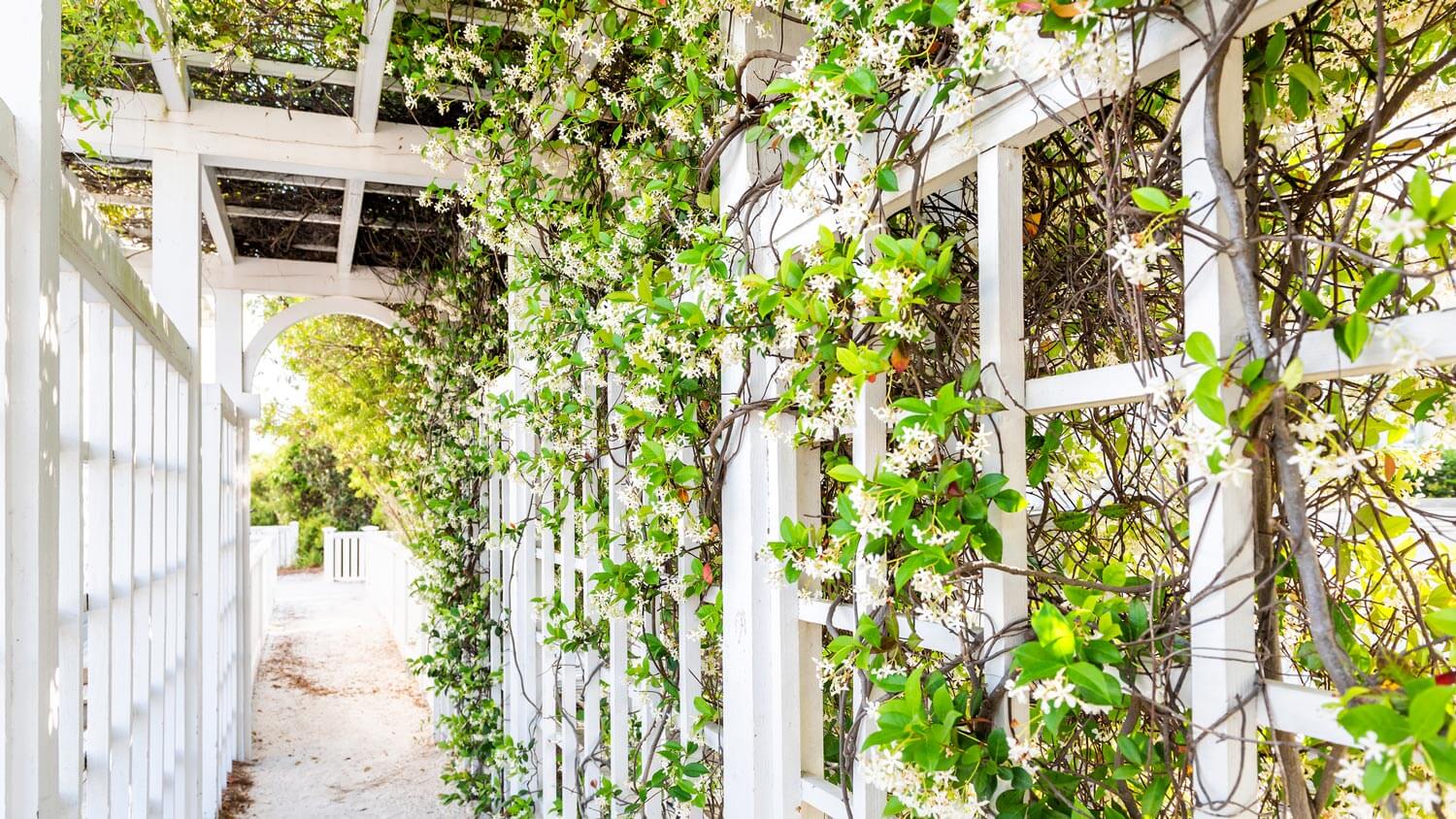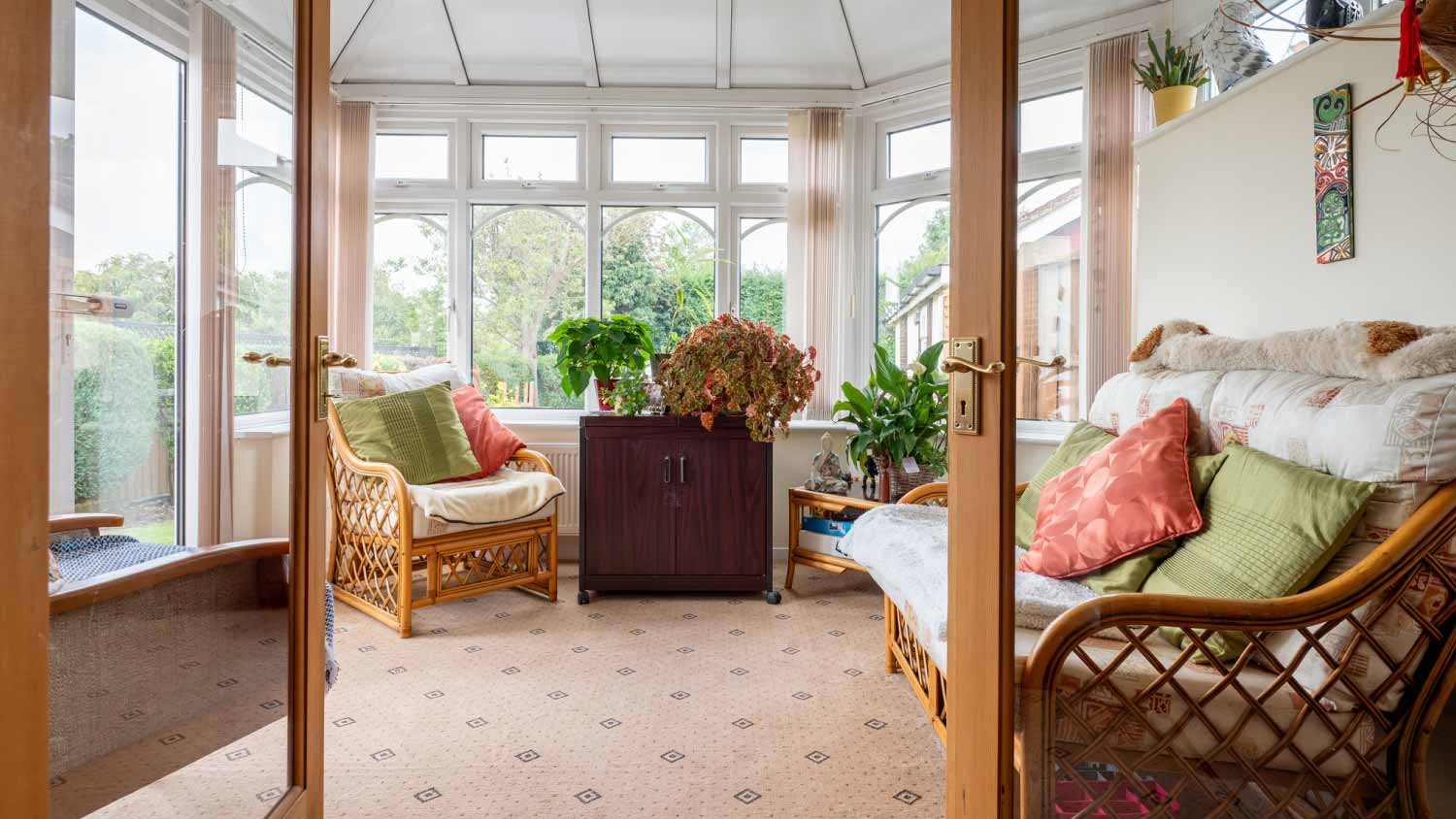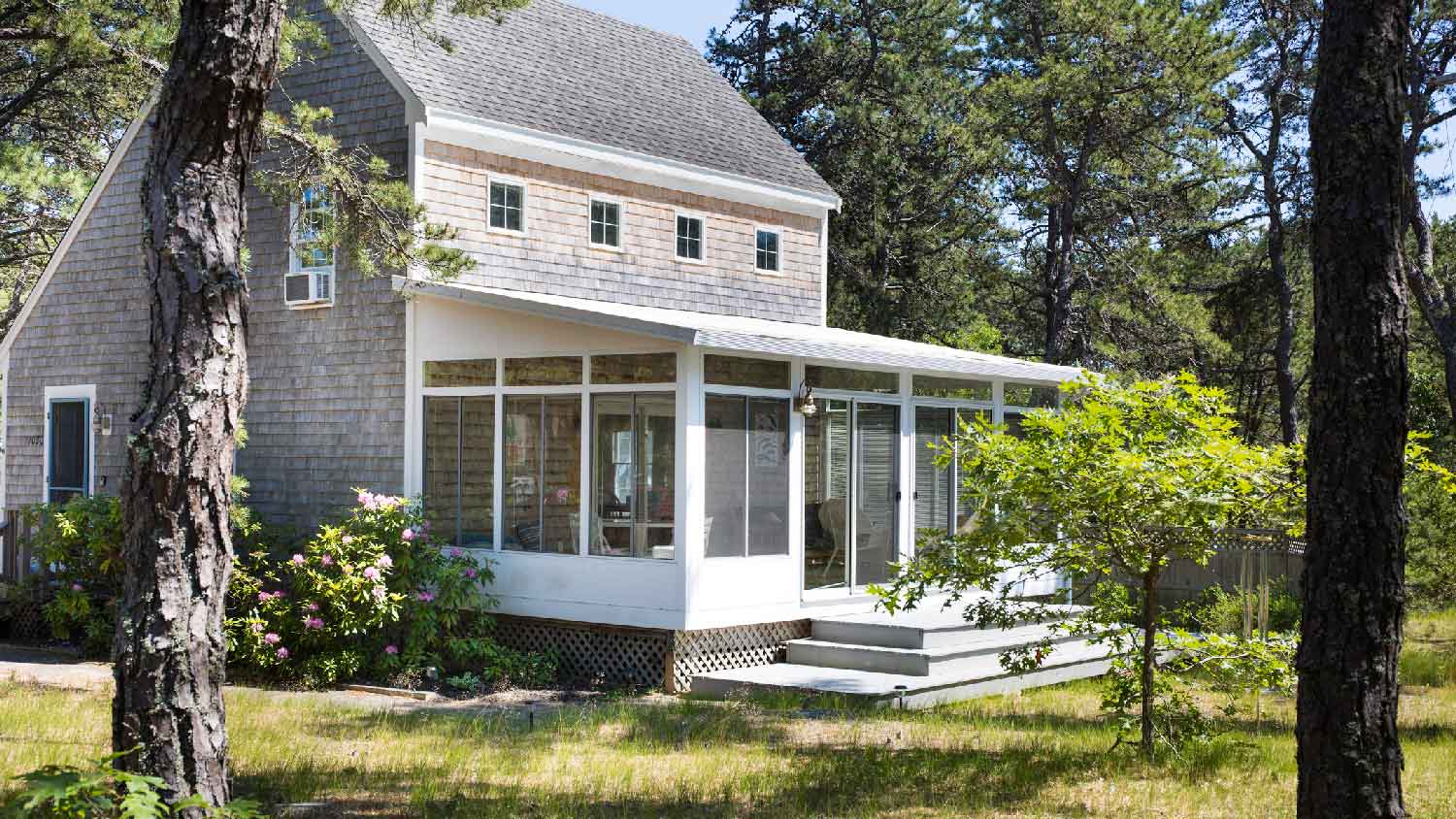
Homeowners can enclose their porches in a few different ways—each having their own price tag. Learn what contributes to the total cost to enclose a porch and how you can reduce the bill.
Whether for planting or privacy, you can spruce up your garden with a DIY trellis


Green beans, fruit trees, pea plants, and tomato plants all have one thing in common: they tend to thrive when given the space to grow vertically! Adding a trellis to your garden or garden bed can help you achieve just that goal and also give your backyard growing spaces a unique look—not to mention a little privacy, which never hurts, either.
“A trellis or pergola is a great addition to any outdoor space,” says Bob Tschudi, Angi Expert Review Board member and general contractor in Raleigh, NC. “These wood structures add texture and depth to your property.”
This step-by-step guide for building a garden trellis is perfect for 4-foot raised garden beds filled with flowering vines and fruits and vegetables. Adjust your measurements accordingly if you have larger or smaller beds or simply would like to build a trellis using different dimensions.
Purchase real plywood, not OSB or MDF, which will deteriorate quickly outdoors. Cut your plywood into 4-foot-by-8-inch and 3-foot-by-8-inch pieces. These will form the frame of your trellis.
A trellis is a grid for plants to attach/be guided as they grow. In this example, we are looking at four 4-foot-by-4-foot trellises. The grid itself is made of string. Most big box home improvement stores sell plywood in 4-foot-by-4-foot sizes.
“When we use plywood for outdoor applications, we always coat the cut edges with latex caulk,” says Tschudi. “That keeps moisture and water from penetrating the vulnerable layers of wood. We also stain or paint the wood, which adds additional protection.”
Using a circular saw or a table saw, cut the 4-foot-by-4-foot plywood into 3-inch-by-4-foot strips. (Cut it to just under 3 inches per strip, as the saw blade itself makes the pieces smaller. On a table saw, set it to 2 7/8 inches.) From a 4-foot-by-4-foot piece of plywood, you should get 16 strips, which will give you four 4-foot-by-4-foot frames.
Use your power drill to drill starter holes into the corners of your frame. You’re working with plywood, which can be sort of fragile, so this will help prevent it from breaking during assembly.
Use a screw to secure your frame at all four corners. The final structure should be rectangular. If you’d like, you can cut corner support pieces with a fifth piece of plywood and add those for reinforcement.
Next, use small nails every 6 inches along the frame on each side. Only nail them in halfway, as you’re going to need the exposed nail in a later step to create the trellis.
This simple approach works differently than building an obelisk trellis, which uses pieces of wood at the base and corners.
Weave your chosen thread around the nails on the outside of the frame. Start weaving horizontally, then once you reach the bottom, switch to a vertical weave. You should then have about 70 squares in your trellis, but if yours is a little higher or lower, that’s fine.
If you’re using a string, aim to use one that doesn’t use polyester. This makes it recyclable. At the end of each season, you can simply cut the string and rethread it with next year’s crops.
Some homeowners prefer to use wood to line their trellis, especially if their trellis will be used as a privacy measure along fences so vines can grow. If that’s the case, you can use the same type of plywood for the frame. You can paint or stain it, too, if desired.
Another popular option is remesh, which is a thin, non-galvanized type of steel.

To secure your trellis, take a trowel and dig two 6-inch holes in the garden bed, along the fence, or wherever it will lie. Make two 6-inch spikes out of leftover plywood by cutting the ends at an angle to form a point. Screw these onto the base.
“Whenever you have wood touching soil or exposed to water, it’s best to protect the wood,” says Tschudi. “At the very minimum, coat any wood that will be in contact with soil or water with caulk. Just smooth it over the surface. This will delay the inevitable contact and decay of the wood.”
Push the spikes into your holes in the garden and rearrange any existing plants or vines accordingly. (A local gardening pro can give you ideas if you’re still trying to decide what to grow.)
If your DIY trellis is going in a garden or raised garden bed, you may want to make a second trellis to help with a row of plants behind it. This method is also useful because it allows the two trellises to freestand. Plus, it just looks cool.
Make a second trellis, then cut two pieces of plywood to the desired length. Fasten them together at the top with screws, then place all four corners of the trellis in your garden.
A homemade garden trellis is super simple and affordable to make if you’re just looking for something functional. However, there are hundreds of DIY trellis ideas out there for creative homeowners, many of which use expensive wood and, quite frankly, aren’t the easiest to put together or install.
Hiring a pro might make sense if you’re doing a total backyard remodel. An expert can give you options to help create the aesthetic you’re going for.
From average costs to expert advice, get all the answers you need to get your job done.

Homeowners can enclose their porches in a few different ways—each having their own price tag. Learn what contributes to the total cost to enclose a porch and how you can reduce the bill.

Love soaking up sun but can’t stand the bugs? Learn how much a Florida room addition costs and what factors influence the price to get the best of both worlds.

While a solarium addition costs homeowners a fair amount of money, the return on investment is higher than most projects. Learn what affects the total cost and where you can save money.

Need a year-round spot to see your gardening hobby flourish? Weigh whether a solarium or a greenhouse is the right choice for you.

Experience the benefits of the outdoors while being protected from bugs and the elements. Learn what a Florida room is and why it can be a great home addition.

Have you had the bright idea to brighten up your living space? What exactly is a sunroom in a house, and is it right for you? Learn more in this guide.